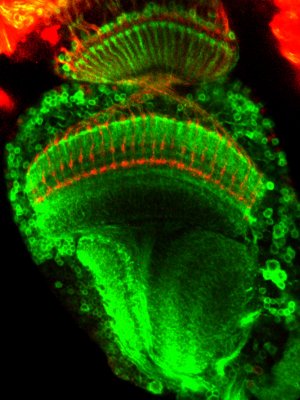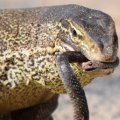
Fluorescent fruit flies have helped University of Queensland researchers take a critical step toward understanding the human brain’s neuronal “wiring” and how it can go awry.
Study leader Dr Sean Millard, from UQ’s School of Biomedical Sciences, said neurobiologists had been baffled by how a small number of genes controlled billions of specific connections in the brain.
“This is a central question in neurobiology that is critical for understanding how brain disorders arise,” Dr Millard said.
A strain of flies was generated with fluorescent brain cells that reported which brain cells expressed two forms of a Down Syndrome protein, Dscam2, that has been implicated in brain disorders.
Dr Millard said disorders, including Down Syndrome and autism, were characterised by miswired neural connections, and the discovery brought researchers closer to understanding how these occurred.
“This study shows that a single gene produces different forms of the same protein in different neurons,” he said.
“Neuron-specific expression of different Dscam2 proteins was shown to be necessary for proper neuronal wiring.”
Dr Millard said the discovery could be vital in understanding how the brain made so many specific connections using such a small toolkit of genes.
“The study provides the first example of how different types of cells require different versions of the same protein for normal brain wiring,” he said.
“This process, called alternative splicing, allows a single gene to generate multiple protein products, called isoforms, with distinct properties.
“As most human genes undergo alternative splicing, it has long been hypothesised that this is one of the key mechanisms for increasing the repertoire of proteins that generate specific connections between brain cells.
“However, direct evidence for cell-specific alternative splicing was lacking until this discovery.”
Fluorescent strains of flies were generated that reported which cells expressed the two different forms of the protein.
“This research implicates alternative splicing as a cellular process that may be perturbed in brain disorders,” he said.
The study, co-authored by Dr Grace Lah and PhD student Joshua Li, was supported by the National Health Medical Research Council of Australia and appears in the neuroscience publication Neuron.
Media: UQ School of Biomedical Sciences, Avril Johnston-Craig, 07 3365 1536, 0408 160 784, a.johnstoncraig@uq.edu.au.











